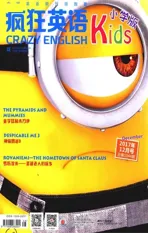THE PYRAMIDS AND MUMMIES 金字塔和木乃伊
2017-12-06by璇玑
by 璇玑
THE PYRAMIDS AND MUMMIES 金字塔和木乃伊
by 璇玑
本篇适合:
阅读、挑战
作为当代世界七大奇迹之一,埃及金字塔是古埃及文明最有影响力和最持久的象征之一。金字塔以及其中的木乃伊无疑是古埃及人民智慧与心血的结晶。巍峨的金字塔是谁建造的呢?木乃伊又是怎么制作的呢?让我们一起来了解一下神秘的金字塔和木乃伊吧。
Who built the pyramids?
Theancient Egyptiansbuilt the pyramids astombsfor their kings, thepharaohs, and other very important people. The biggest is the Great Pyramid at Giza. It was 164.5m high when it was built. It is taller than theStatue of Libertyis today.
Why did pharaohs need pyramids?
No one knows the answer, but we do know that the Egyptians thought that the dead people travelled to another world, theafterlife. They believed the pyramids could help them reachheaven.
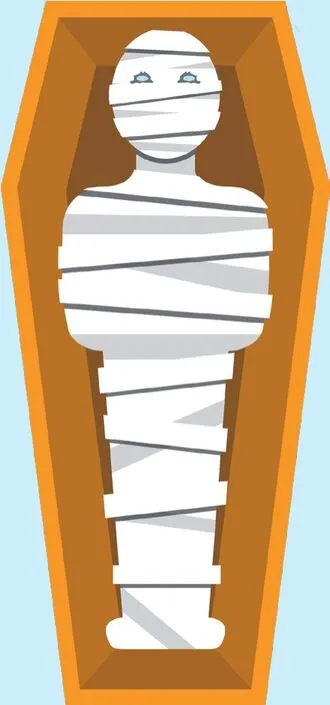
How were mummies made?
First, thebrain,lungs,heart,stomach,intestinesandliverwere taken from the body. Then the body was washed and left todryout for 40 days. Next, it was time torubdown the body in specialoils.Finally, the body was carefullywrappedinbandagesand put in acoffin.
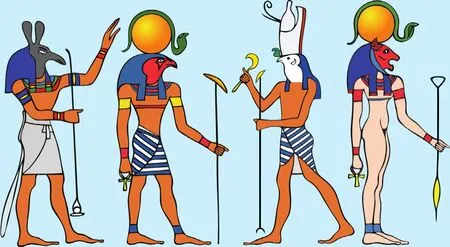
True or False:
Mummies do not have brains.
True: The brain wasthrown away. The heart was put back in the body.
Only people were mummified.
False: Some animals like cats andcrocodileswere also mummified.
Egyptians worewigs.
True: Pharaohs and rich people wore wigs.
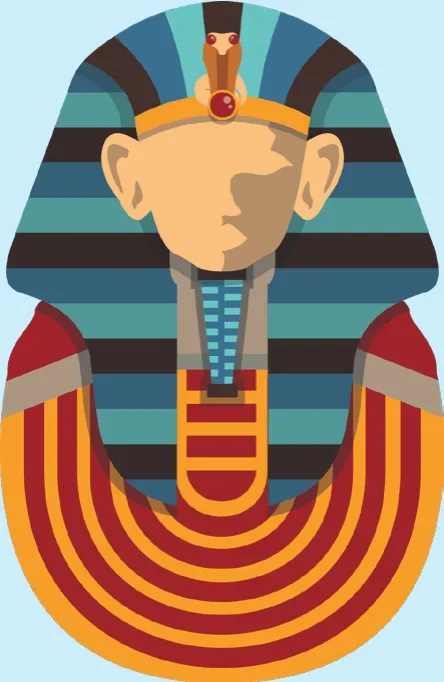
中文大意请见第48页。
Word Power
pyramid['pɪrəmɪd] n. 金字塔(复数:pyramids)
mummy['mʌmɪ] n. 木乃伊,指长久保存的古埃及人尸体,这些尸体能保存数千年是因为它们经过了特别的处理。(复数:mummies,动词:mummify,过去分词:mummified)
ancient['eɪnʃənt] adj. 古代的
Egyptian[ɪ'dʒɪpʃ(ə)n] n. 埃及人(复数:Egyptians)
tomb[tuːm] n. 陵墓(复数:tombs)
pharaoh['feərəʊ] n. 法老(复数:pharaohs)
Statue of Liberty['stætjuː ɒv 'lɪbətɪ] 自由女神像
afterlife['ɑːftəlaɪf] n. 来世,来生
heaven['hevən] n. 天堂
brain[breɪn] n. 大脑
lung[lʌŋ] n. 肺(复数:lungs)
heart[hɑːt] n. 心脏
stomach['stʌmək] n. 胃
intestine[ɪn'testɪn] n. 肠(复数:intestines)
liver['lɪvə] n. 肝脏
dry[draɪ] v. 使……变干
rub[rʌb] v. 擦
oil[ɔɪl] n. 油(复数:oils)
finally['faɪnəlɪ] adv. 最后
wrap[ræp] v. 包(过去分词:wrapped)
bandage['bændɪdʒ] n. 绷带(复数:bandages)
coffin['kɒfɪn] n. 棺材
throw away[θrəʊ ə'weɪ] 扔掉(过去分词:thrown away)
crocodile['krɒkədaɪl] n. 鳄鱼(复数:crocodiles)
wig[wɪg] n. 假发(复数:wigs)
Know More
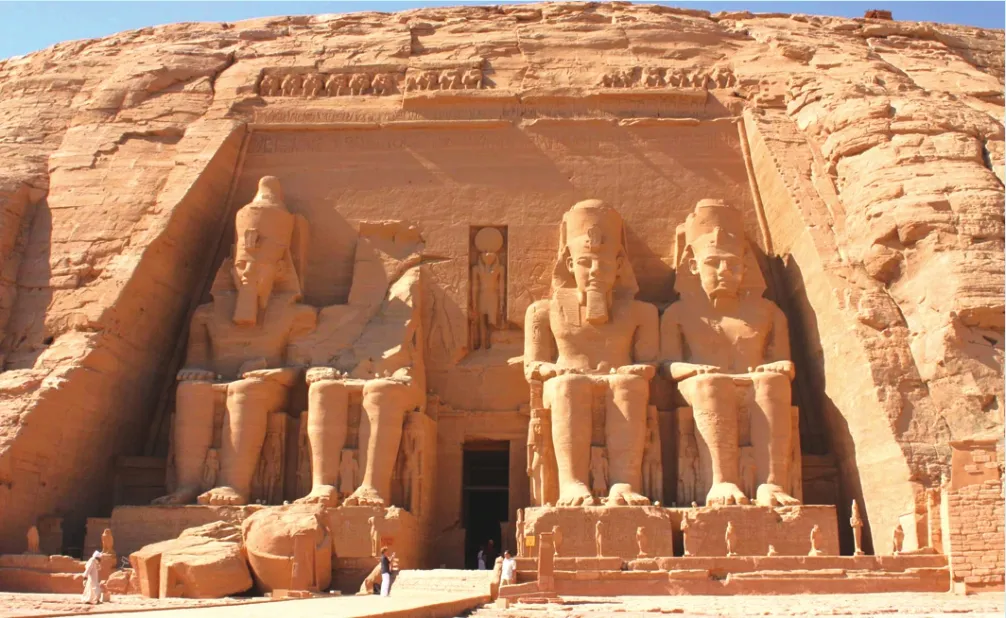
Abu Simbel Temple 阿布辛贝神庙
阿布辛贝神庙绝非一块块巨石的堆砌物,而是在尼罗河西岸粉红色砂岩悬崖的山体上,用人工劈凿出的宏伟建筑。
The Great Pyramids 大金字塔
开罗西南十公里处的吉萨区(Giza)有三座很大的金字塔,分别是胡夫金字塔、哈夫拉金字塔和孟考拉金字塔,一般统称为大金字塔(The Great Pyramids)。
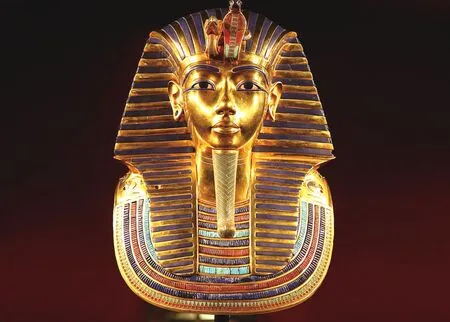
Tutankhamen’s Golden Mask 图坦卡蒙的黄金面具
图坦卡蒙的木乃伊被发掘出来的时候,头部罩着一个黄金面具,这使他成为当代所知最著名的埃及法老。面具前额部分饰有鹰神和眼镜蛇神,象征上、下埃及(上埃及以神鹰为保护神,下埃及以蛇神为保护神);下面垂着胡须,象征冥神奥西里斯。该面具是世界上最精美的艺术珍品之一。
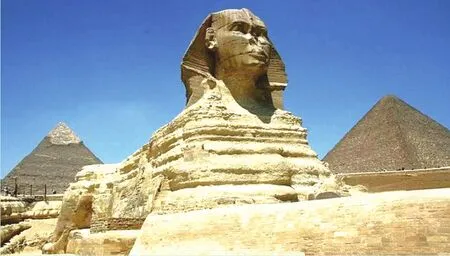
Sphinx 狮身人面像
是埃及著名古迹,与金字塔同为古埃及文明最有代表性的遗迹。此像头戴“奈姆斯”皇冠,额上刻着“库伯拉”(即cobra:眼镜蛇)圣蛇浮雕,下颌有帝王的标志——下垂的长须,仅耳朵就有两米多长。
Karnak Temple 卡纳克神庙
卡纳克神庙是古埃及帝国遗留的一座壮观的神庙,庙内有一著名的方尖碑(obelisk),是世界上第一位女王、古埃及唯一的女法老哈特谢普苏特女王所立,是当时最高的方尖碑,也是现在埃及境内最高的方尖碑。
Luxor Temple 卢克索神庙
位于埃及中南部城市,埃及人常说:“没有到过卢克索,就不算到过埃及。”
Valley of the Kings 国王谷
国王谷位于在与卢克索城相对的尼罗河西岸的一条山谷中,是许多国王和王室成员的陵墓,这里埋葬着第17王朝到第20王朝期间的64位法老。
